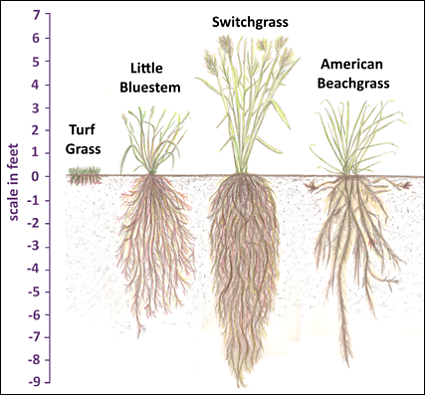|
Building soil organic matter in your crop fields is not a very hard task to accomplish at least when it comes to the methods used to do it. The hardest part about increasing your soil's organic matter percentage is the time it takes and that the more organic matter you have in your fields the harder it is build even more. Before I jump into on how to add to the organic matter content in your soil I first want to touch lightly on what causes organic matter to be depleted in the first place.
The main culprit in organic matter depletion in soils is humans and their agricultural practices. To be more specific the heavy cultivation of soil by plowing and disking. These practices while great for temporarily loosening soils and preparing it for seeding have many unintended consequences. One of those consequences that we are learning more about in recent years is the loss of organic matter from the soils. The act of tilling up the soil introduces oxygen into previously oxygen deficient areas of the soil which speeds up the activity of the microorganisms that use organic matter as a fuel. This means that without intending to you can potentially burn through years of very useful organic matter in one season which leaves your soil deficient in much needed resources the following years. The long term effects of organic matter depletion are painful with reduced yields, drier soils, general poorer crop quality. But with some changes in how you manage your fields, what you plant and little patience you can restore most of the organic matter your soil once had and with it increased productivity and plant health. Building Soil Organic Matter Put Away The Plow The first and the most critical step in my mind to building up organic matter is to simply put away the plow. By completely removing cultivation from your toolbox you will take away the number 1 thing responsible for organic matter loss in fields. Like I explained above the act of cultivating rapidly increases the rate at which organic matter is used up in the soil. The amount of organic matter present in the soil at the time of the first cultivation is the highest that soil will ever see unless you let that field go back to native vegetation. Some cultivation will still be necessary in most cases to achieve your crop growing goals but it should be kept as minimal as possible. 
Always Be Growing Something
The next step is to always have something growing in your fields. For example the average frosts dates for Fargo, ND is May 5th- October 4th. That is a growing season of around 5 months give or take a few days. Now on average a field crop like corn, wheat or soybeans will take 3-4 months from planting to harvest depending on local climatic conditions. So that leaves you with a month or two in which to be growing something else in your fields. This something else usually takes the shape of a fall or spring cover crop that occupies the field in the off season. Now growing this cover crop does a few things for you,
Different cover crops do different things to your field. If you plant something called a tillage radish it loosens up compacted soils and improves water infiltration. While a cover crop that is a winter wheat, field pea combination is great at putting down lots of roots and fixing nitrogen for your next crop. A good cover crop can leave literally tons of biomass per acre on a field which is a great source of organic matter for microorganisms.
Leave Residue On The Field
Finally at the end of all the work of planting and growing your crop you are at the harvest. There are lots of ways you can harvest the crops you have grown but if building up soil organic matter is one of your goals then you should use a way that leaves as much residue as possible. Organic matter has to come from somewhere and the easiest source you have is to leave as much of your crop in the field as you can. For most crops you will typically be after something that has grown on the top part of the plant like the corn cob or soy bean pod. If you have no use for the leftovers then leaving them on the field is simply the best option. The soil organisms can be very efficient when given the chance at disposing of field residue. In the past I have worked with farmers that have said that they can’t keep enough residue on the fields because the soil microbes have gotten so good at using it up. Even employing all these techniques it will take years to build up the lost organic matter your soil once had and it will never be as good as it would be under permanent vegetation. But you cannot go wrong by doing everything you can to improve it. To learn more about organic matter look up the sources I have on this article or other posts in the Green Living Library. Sources: http://www.soilandhealth.org/01aglibrary/010120albrecht.usdayrbk/lsom.html http://digitalcommons.unl.edu/cgi/viewcontent.cgi?article=1492&context=agronomyfacpub http://www.nass.usda.gov/Publications/Usual_Planting_and_Harvesting_Dates/uph97.pdf
0 Comments
Leave a Reply. |
AuthorHello my name is Josh Larson and I am the creator of the Green Living Library. Here on the blog you will find updates to content found in the Green Living Library as well as stories from those living the sustainable life already. Archives
December 2021
Categories
All
|

